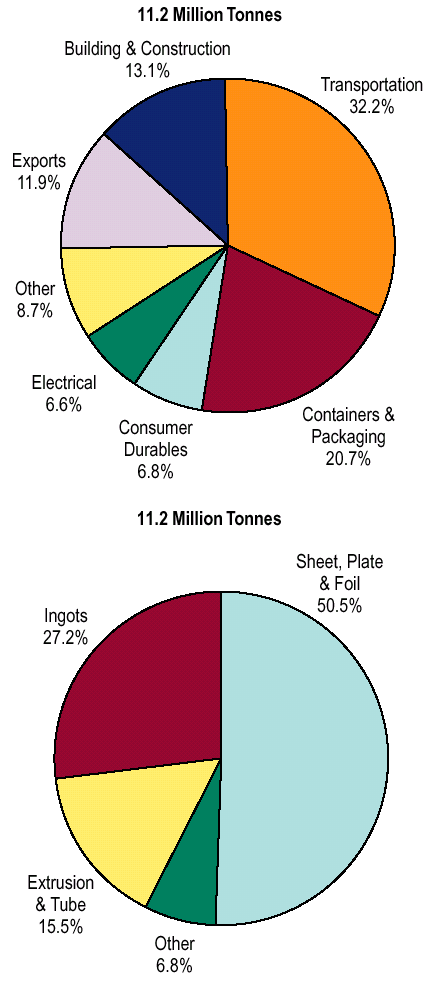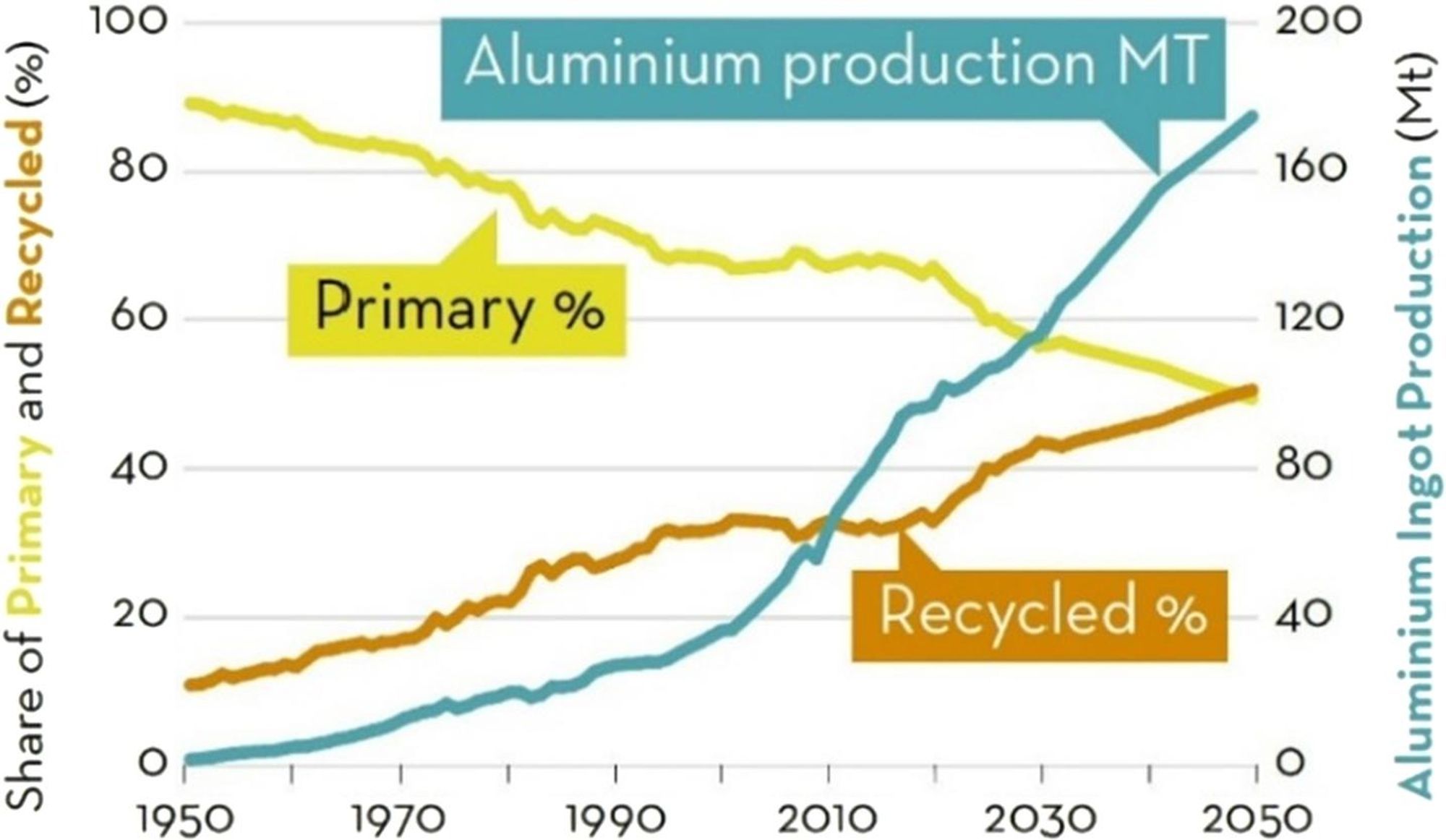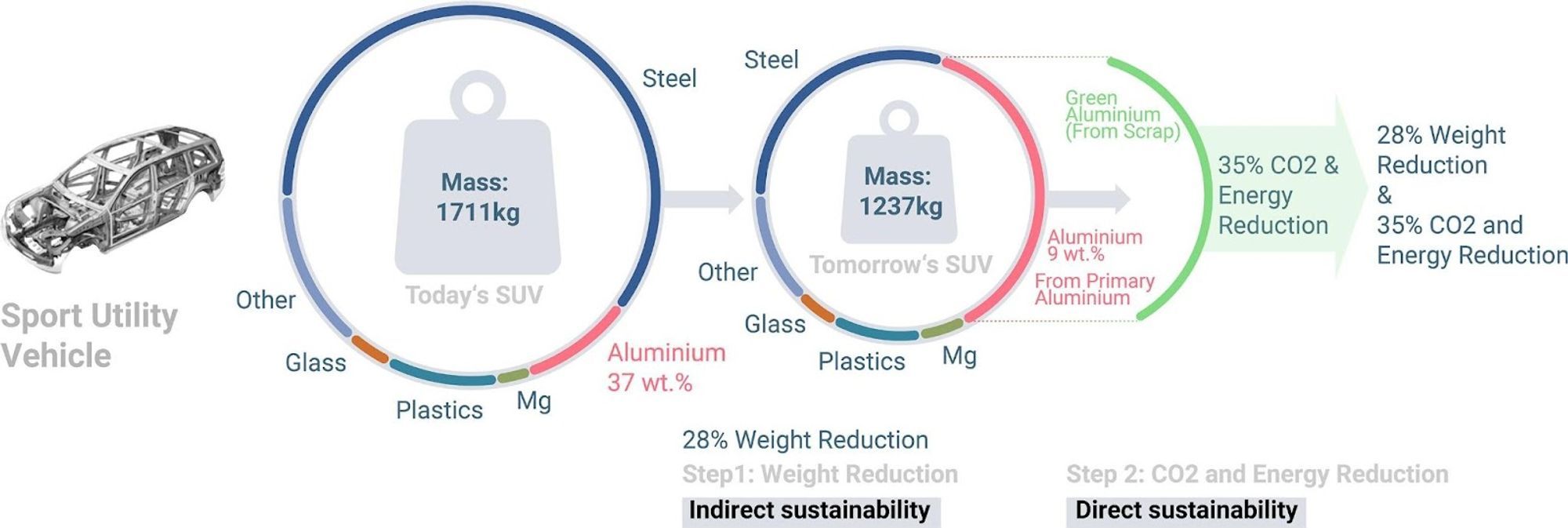The Prospective Impact of Eloxwell Technology on the Cast Aluminum Market
The evolutionary journey of cast aluminum is a testament to the power of adaptation. Thanks to metallurgy, engineering, and design advances, aluminum casting has redefined its role in various industries. The rise of circular economy principles has underscored the importance of sustainable materials, and cast aluminum has taken center stage. Cast aluminum fits seamlessly with circularity principles thanks to its inherent recyclability and durability. From aerospace marvels to architectural wonders, the versatility of cast aluminum knows no bounds. Its applications span industries as diverse as automotive, electronics, construction and beyond.
As technology drives industries forward, the potential impact of Eloxwell technology on the cast aluminum market cannot be ignored. This game-changing development promises longer lifespans, a reduced carbon footprint and an aesthetic transformation. Intertwining data-driven precision with sustainable ideals, Eloxwell is set to redefine how cast aluminum products are produced, perceived and adopted across industries.
Exploring the convergence of innovation, sustainability and industrial applications, it will unravel the complex tapestry that weaves together the past, present and future of cast aluminum's profound impact on our world, from its technological evolution to its role in supporting the circular economy, and from its diverse applications across sectors to the revolutionary prospects offered by Eloxwell technology.
Innovation and Technology: How Cast Aluminum Continues to Redefine Industrial Applications
In 2001, the aluminum industry continues to benefit from technical innovations made in alloy development, product-manufacturing technologies, and processing equipment over the last century. This paper examines the top ten alloy, product, and process developments that have shaped the industry’s production methods and markets. The inter-relationships among the alloy development, process innovations, and markets are highlighted. Omitted are details about patent literature or the inception of many technologies; the major criterion for placement on the list was impact on the total industry.
The aluminum industry has evolved over the past 100 years from the limited production of alloys and products to the high-volume manufacture of a wide variety of products. Today’s U.S. aluminum production includes roughly 5.6 million tonnes of flat-rolled products, 1.7 million tonnes of extrusions and tube, and 2.4 million tonnes of ingot/castings.1 These products are used in a wide variety of markets, including building and construction, transportation, and packaging. Markets also exist for such products as electrical conductors (EC), forgings, rod, wire, bar, and powders and pastes
Global Outlook: Analyzing the Regional Growth of the Cast Aluminum Market
The automotive industry is the key driver for the growth of the aluminum die-casting market. At a global average, nearly 60% of the aluminum cast products are directed toward the automotive industry. In some countries, the penetration of aluminum-cast products in the automotive sector is much higher compared to the global average. For instance, the automotive sector utilizes roughly 80% of the produced aluminum cast products in Spain.
Moreover, rising emphasis on infrastructural developments for economic recovery is expected to positively affect market growth. Increasing penetration of aluminum in construction applications is expected to propel the developing economies of Asia.
Recycling Revolution: How Circular Economy Principles Boost Cast Aluminum's Market Prospects
About 75% of all the aluminum produced in history – nearly a billion metric tons – is still in use today. Recycling involves re-melting the metal, which requires only 5% of the energy used to make new aluminum from bauxite ore: the primary synthesis of Al from ores expends 45 kWh/kg because of the large enthalpy of its oxide, and about 12 kg CO2/kg while re-melting Al scrap (secondary synthesis) expends only 2.8 kWh/kg because of its low melting point (660 °C), and about 0.6 kg CO2/kg. This means that recycling has the potential to shift aluminum’s energy and carbon balance substantially towards much greater sustainability.
On average, a third of the aluminum used today is produced from recycled scrap, although this fraction is predicted to rise to 50% by 2050, according to data (2019) from the International Aluminum Institute (can see in figure on the downside). The huge differences between primary and secondary synthesis in terms of GHG and energy consumption make aluminum alloys, as an important pillar of a circular economy, important subjects for sustainable metallurgy research.

Global Outlook: Analyzing the Regional Growth of the Cast Aluminum Market
The automotive industry is the key driver for the growth of the aluminum die-casting market. At a global average, nearly 60% of the aluminum cast products are directed toward the automotive industry. In some countries, the penetration of aluminum-cast products in the automotive sector is much higher compared to the global average. For instance, the automotive sector utilizes roughly 80% of the produced aluminum cast products in Spain.
Moreover, rising emphasis on infrastructural developments for economic recovery is expected to positively affect market growth. Increasing penetration of aluminum in construction applications is expected to propel the developing economies of Asia.
Recycling Revolution: How Circular Economy Principles Boost Cast Aluminum's Market Prospects
About 75% of all the aluminum produced in history – nearly a billion metric tons – is still in use today. Recycling involves re-melting the metal, which requires only 5% of the energy used to make new aluminum from bauxite ore: the primary synthesis of Al from ores expends 45 kWh/kg because of the large enthalpy of its oxide, and about 12 kg CO2/kg while re-melting Al scrap (secondary synthesis) expends only 2.8 kWh/kg because of its low melting point (660 °C), and about 0.6 kg CO2/kg. This means that recycling has the potential to shift aluminum’s energy and carbon balance substantially towards much greater sustainability.
On average, a third of the aluminum used today is produced from recycled scrap, although this fraction is predicted to rise to 50% by 2050, according to data (2019) from the International Aluminum Institute (can see in figure on the downside). The huge differences between primary and secondary synthesis in terms of GHG and energy consumption make aluminum alloys, as an important pillar of a circular economy, important subjects for sustainable metallurgy research.

The figure on the underside shows an example where using recycled Al (instead of material from primary synthesis) in a vehicle generates a 28% reduction in mass (and therefore fuel) and a 35% reduction in energy consumption and GHG emissions during manufacture.

Weight reduction and the associated fuel savings (left) plus reduction in energy consumption and GHG output from synthesis when using alloys made from scrap (right).
- Step 1 (data from Al Association) shows how much mass is saved when increasing Al from 9 to 37 wt%.
- Step 2 shows that this generates a 28% reduction in mass plus a 35% reduction in energy consumption and GHG emission when using scrap-based Al.
Serving Multiple Sectors: Diverse Applications of Cast Aluminum in Modern Industries
Aluminum casting is a variation that uses only aluminum and aluminum alloys as the liquid metal poured into the mold. Aluminum castings are used to make complex and detailed parts very efficiently. Casting aluminum alloys are quite widespread and find more and more applications in modern industry. According to different estimates, up to 20–30% of all aluminum products manufactured worldwide are used for aluminum die castings.
Thanks to significant improvements in casting technologies, it is now possible to produce high-quality aluminum die casting components with properties comparable to those of similar wrought products, such as sheet and extrusion. This can be achieved for high-quality alloys and those made with substantial amounts of aluminum scrap. In the latter case, the advantage is lower production costs.
Significant improvements in the quality of aluminum die were achieved due to improved production processes. Today, it is possible to employ advanced methods of molten metal handling, which dramatically reduce harmful nonmetallic impurities. For instance, hot isostatic pressing is used to reduce shrinkage porosity. All these and many other innovations result in significant improvements of aluminum die-casting quality as well as mechanical properties. This study focuses on the importance of the use of aluminum die casting in the automotive industry. Research so far of the developments and global trends of aluminum die casting were also summarized.
Potential Effect of Eloxwell Technology on Cast Aluminum Market
A new dawn is dawning for the cast aluminum market in the realm of industrial progress at the intersection of innovation and technology. The emergence of Eloxwell technology is emerging as a catalyst with the potential to reshape the landscape, ushering in a wave of transformation that touches on longevity, sustainability, and aesthetic excellence. This chapter explores the promising horizons opened by Eloxwell technology and its potential impact on the cast aluminum market.
At the heart of the Eloxwell revolution lies the capacity to extend the life of anodized aluminum parts. The essence of sustainability is embedded in this concept, as technology paves the way for reducing consumption and waste. Anodized aluminum, now reinforced with Eloxwell, exhibits enhanced durability that seamlessly aligns with circular economy principles. The potential to significantly reduce replacement frequency directly reduces material consumption, energy expenditure, and carbon emissions, presenting a compelling case for industries seeking to adopt greener practices.
In a world where form meets function, aesthetics play a vital role in consumer perception. Eloxwell technology brings with it a remarkable bonus: aesthetic enhancement. Complex geometries that have presented challenges in the past can now be uniformly anodized, creating aluminum parts that are not only functional but also visually appealing. This harmony of durability and aesthetics supports the marketability of cast aluminum across a variety of sectors, providing a way for industries to offer products that are both visually stunning and robust in performance.
Eloxwell's potential impact on the cast aluminum market stems from its data-driven approach. The technology's automated characterization process based on aluminum alloy type promises a new level of understanding when it comes to failure conditions. This insight enables manufacturers to tailor their anodization processes with a level of precision previously unattainable. The integration of comprehensive databases and cloud-supported software enables real-time monitoring, parameter optimization and failure analysis, creating a solid foundation for quality control and process improvement.
The journey of Eloxwell technology does not end in the confines of laboratories; it is ready for industrial-scale integration. The comprehensive database created through rigorous material and electrochemical characterization serves as a roadmap for optimization. With the transition to controlled production following the successful first application, Eloxwell is positioning itself as a bridge to a new era in aluminum production. The potential impact of the technology extends far beyond individual applications and has the potential to revolutionize the way industries approach cast aluminum on a broader scale.
The potential impact of Eloxwell technology on the cast aluminum market is poised to be transformative. Through a long lifetime, reduced environmental impact, improved aesthetics and data-driven precision, Eloxwell offers a versatile solution that aligns with contemporary ideals of sustainability and performance. As industries increasingly turn to innovative solutions, Eloxwell stands as a beacon shining a light into a future where cast aluminum excels in function and exemplifies the principles of ecological responsibility, technological advancement, and market compatibility.